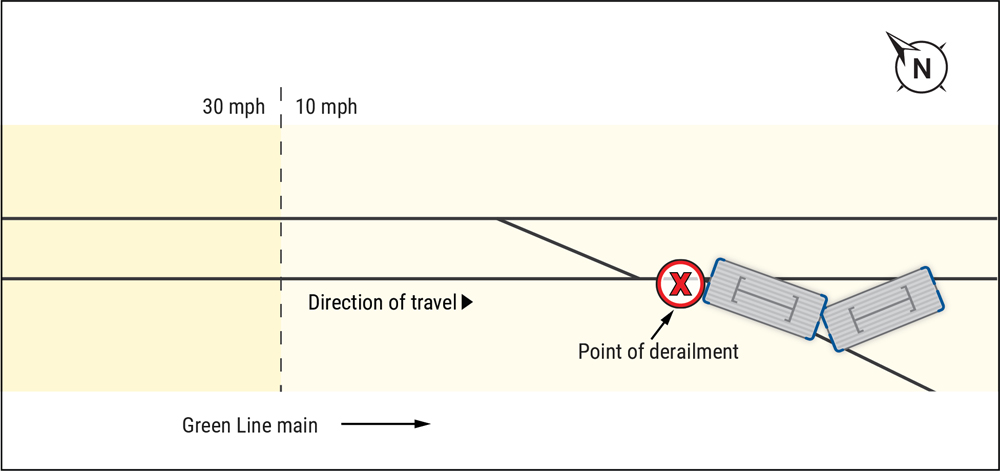
WASHINGTON — The Massachusetts Bay Transportation Authority Green Line train that derailed earlier this month ran through a red signal and was traveling at 36 mph in a 10-mph zone immediately before derailing, according to the preliminary investigation report from the National Transportation Safety Board.
The derailment occurred when the train reached a switch that was still moving into the correct alignment for the train’s intended route. The train’s lead truck continued straight while the following trucks were sent onto the diverging track and then derailed.
The derailment occurred Oct. 1 about 5 p.m. near the Lechmere station in Cambridge, Mass. Seven people were transported to hospitals with what the NTSB report calls minor injuries [see “Seven taken to hospital …,” Trains News Wire, Oct. 1, 2024].
The NTSB says its continuing investigation will focus on speed-rules compliance and internal and external oversight.
WHDH-TV reports the MBTA said in a statement that the train’s operator remains out of service while the agency conducts its own investigation. The statement also said the MBTA “has been working aggressively to improve safety at all levels and has stepped up its focus on compliance with operating rules, including adherence to posted speed limits.”














What kind of signal system do they have that allows a movement to proceed when a power turnout has not closed and locked?
There’s an exception with street track. With single point power switches, there are usually no signals but the rules call for a complere stop. The operator then uses a Mark I eyeball to ensure the switch is set for the right direction.
Mr. Mulligan: That train was not lined up for the intended route. The motorman ran the signal governing the route.